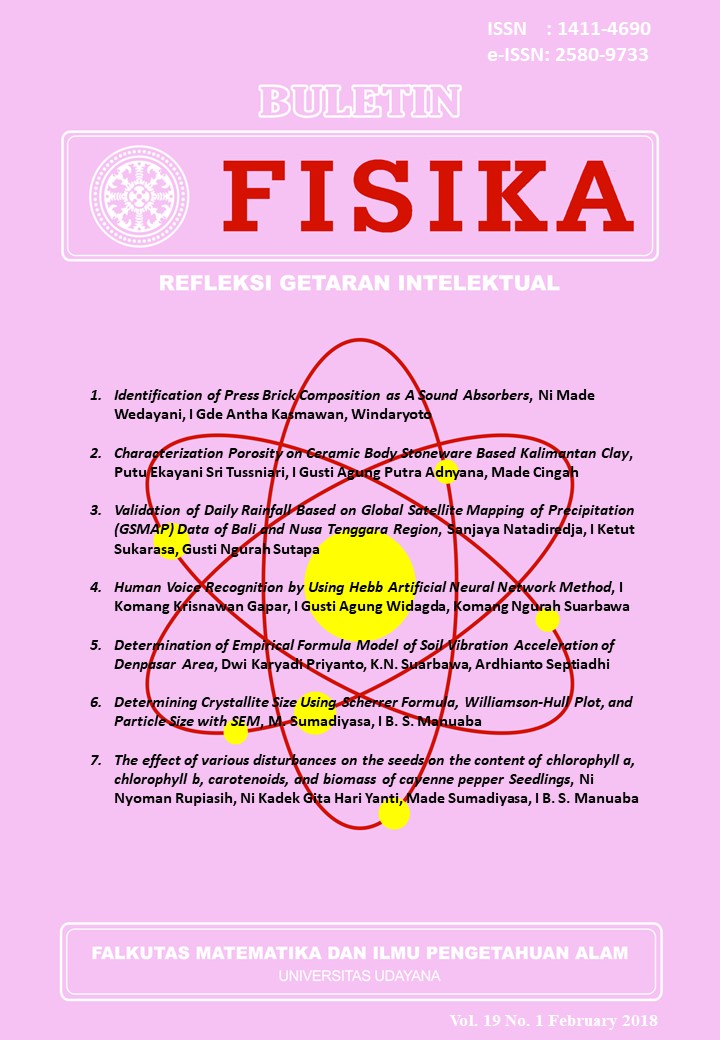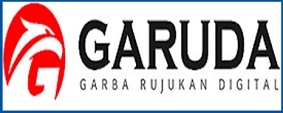Characterization Porosity on Ceramic Body Stoneware Based Kalimantan Clay
Abstract
It has been made ceramic body stoneware using a mixture of Kalimantan clay, RRC feldspar, Belitung kaolin, Belitung quartz and Bukit Jimbaran limestone further coded BPC-1. This study aims to determine the value of dry shrinkage, the effect of sintering temperature of 900oC and 1200oC against firing shrinkage, and the influence of sintering temperature of 900oC and 1200oC against porosity in the ceramic body stoneware. Ceramic stoneware burned with a temperature variation of 900oC and 1200oC. The results show the value of dry shrinkage in ceramic stoneware of 2.9%. Stoneware ceramic firing shrinkage at a temperature of 900 oC combustion of 1.3%, and the combustion at a temperature 1200oC of 3.8%. Porosity ceramic stoneware at a temperature of 900oC combustion showed porosity of 10.5%, while the combustion at a temperature 1200oC of 5.5%. Show that the combustion temperature greatly affects the value of dry shrinkage, firing shrinkage and porosity of stoneware ceramics. The higher the combustion temperature the higher the shrinkage and the decreasing the porosity.
Downloads
References
[2] Behrens, R., 1993, Glaze Projects, a Formula of Leadless Glazes, A Ceramics Monthly Megazine Handbook, Profesional Publications, Inc., Ohio
[3] Lawrence, W.G., & West, R.R., 1982, Ceramics Science for Potter, Chilton Book Company, Radnor, Pennsylvania
[4] Mason, Brian, Moore, Carleton B., 1982, Principles of Geochemistry, 4th. Ed., John Wiley & Sons, New York
[5] Miller, J.C., 1998, Statistics for Analiytical Chemistry, 2nd.Ed., Elis Horwod Limited, New York
[6] Nelson, Glen C., 1986, Ceramics A Potter’s Handbook, 5th. Ed., John Wiley and Sons, New York
[7] Normal, I Nyoman., 2004, Pengaruh Komposisi Pigmen R338 terhadap Karakteristik Fisik dan Variabel Keuangan yang Menjadi Dasar Pengambilan Keputusan Bisnis Glasir RM pada UPT PSTKP Bali-BPPT, Denpasar Bali
[8] Solichin A., 1986. Pengujian Bahan Mentah dan Produksi Keramik, Balai Besar Penelitian dan Pengembangan Industri Keramik, Bandung.
[9] Sundari, K. N., Supriyadi, Suradharmika A., 2010, Pengujian Sifat Fisik Massa Bodi Keramik Stoneware Berbasis Lempung Kalimantan Kode BPC-1, UPT PSTKP, Denpasar Bali
[10] Supomo, 1998, Karakterisasi dan Pengendalian Bahan Mentah Keramik, Diklat Quality Control Supervisor Industri Keramik Saniter dan Tableware, BBIK, Bandung











